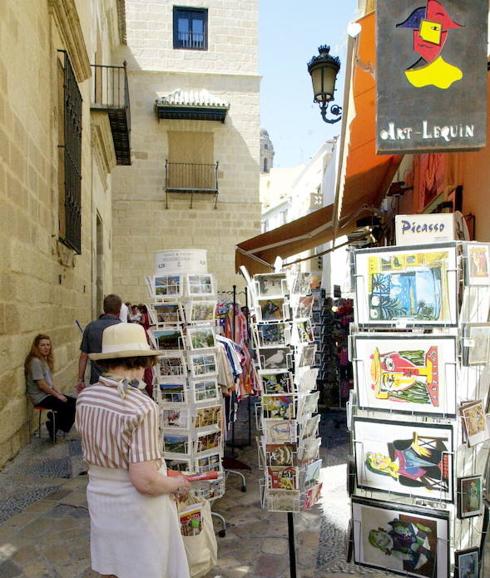

Sections
Highlight

Tony Bryant
Tuesday, 15 August 2017, 13:19
Compartir
The traditional family summer holiday has always been a time for leaving behind the worries and strains of our daily routines in order to enjoy a few weeks in the sun. Probably the only chore we would have to attend while visiting our chosen destination would be to send news of our escapades to family and friends back home. Today, this is something of an easy task, but we once had to rely on the good old-fashioned holiday postcard in order to do this.
The first picture postcards appeared at the end of the nineteenth century, when British publishers were given permission by the Royal Mail to manufacture and distribute these cards. The revolutionary postcard, which could be sent through the post without an envelope, became one of the sure ways holiday makers could let loved ones know they were well and that they were having a great time.
The soaring demand for picture postcards led to a huge increase in the number of postcard publishers and they issued cards covering a vast range of subjects.
In the early 1930s, the saucy cartoon-style postcards became popular. These were often suggestive in nature, making use of innuendo and featuring stereotypical characters such as vicars, large-bosomed ladies and hen-pecked husbands.
In the early 1950s, the newly-elected Conservative government were concerned at the apparent deterioration of morals in Britain and decided to regulate these bawdy postcards. In the more liberal 1960s, the saucy postcard was revived and became as popular as the time-honoured stick of rock. During the 1970s and 80s however, the quality of the artwork and humour began to deteriorate and the demise of the saucy postcard occurred.
Sold by newsagents and souvenir shops all along the Costa del Sol, traditional seaside postcards often featured multiple depictions of the resort. They were a way of making those back home jealous of the favourable weather conditions and cheap drink that we wrote about on the reverse of the card, and at one time we sent more than 16 million of them a year.
However, the old-fashioned postcard seems somewhat consigned to history by the revolution of the mobile phone. With todays sophisticated smartphones, we no longer need to search out postcards with pictures of landmarks, scenic views or local architecture, as this is now done at the click of a button and sent immediately to the recipient.
So the question remains: are the days of sending the good old fashioned postcard now a thing of the past?
Racks of postcards once cluttered the doorways of shops and news agents in just about every seaside resort and, although they might still be found in certain areas along the Costa del Sol, there are few people that still engage in this long-established custom. In fact, even the practice of sending birthday and Christmas cards has declined since the invention of the internet, and, like many aspects of yesteryear, the modern world in which we now live has erased the tradition of sending the classic seaside postcard.
Despite the decline in their popularity, they continue to be a significant aspect of British culture and old cards provide an extremely valuable record of the past. The postcard might record a village scene or street that has long since disappeared. This is particularly true in old villages where houses and buildings have been erased without any record being made, other than the picture postcard, which are no longer in print.
People still search out these old postcards, not to send to their friends, but because they have now become a collectable item.
Original postcards are now highly sought after, and vintage cards, especially those published by ETW Dennis of Scarborough or Bamforths of West Yorkshire, can command high prices at auction and on eBay.
Prices can range from a few pounds to several thousand, depending on the condition, so, even though the dreaded mobile phone has erased the custom of sending cards, these iconic emblems of the British holiday are still very much in demand.
Some of the most popular cards feature street scenes and the social life of bygone days, while other collectable postcards include images of the Titanic or famous sports personalities and film stars.
The most expensive postcard (and the oldest according to Guinness World Records) was sold at auction for 35,000 euros, so it may well be worth checking to see if we still have any tucked away with our old holiday snapshots.
Publicidad
Publicidad
Publicidad
Publicidad
Reporta un error en esta noticia
Necesitas ser suscriptor para poder votar.